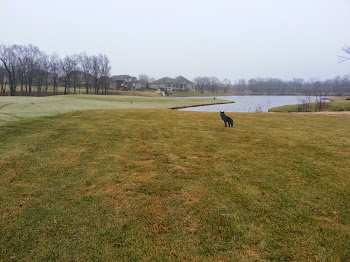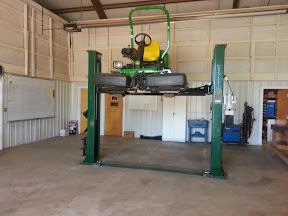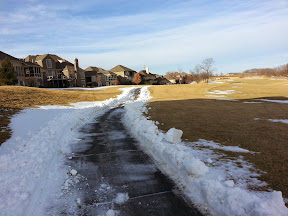It was brought to our attention that someone spotted a snake while playing golf at Staley Farms. I went to the Missouri Department of Conservation website and found the following information about this topic.
Snakebites are Rare Contrary to popular belief, snakes do not go looking for people to bite. In fact, snakes are more afraid of you than you are of them. As Jim Low says in his Snakebytes blog post, "Snakebite ranks just above falling space debris as a threat to human life."
Read his post to learn more about who gets bitten by snakes, when, and why.
Fun to Study, Important to People and Nature
Missouri, with its variety of wildlife habitats, is home to a total of 47 species and subspecies of snakes. The majority (88 percent) of our snakes are harmless.
Snakes are reptiles — a group that also includes lizards, crocodiles, and turtles. Reptiles in general are covered with scales, are the same temperature as their surroundings, and have been around for millions of years. Snakes and lizards are closely related. Snakes are legless, have no external ear opening, and are not slimy. About half of our snakes lay eggs, and half give birth to completely developed young. As they grow, snakes shed their outer skins three to five times a year. All snakes can swim. The internal organs of snakes are elongated, which allows them to fit into the tubular body cavity. Most species have an elongated right lung and no left lung.
All snakes eat other animals and are classified as carnivorous. As noted above, they play an important role in controlling rodent populations, and they also serve as a food source for other wildlife, such as hawks, owls, mink, skunks, and herons. Some snakes even eat other snakes. Kingsnakes, which are immune to the venom of our venomous snakes, will kill and consume them if given the opportunity. Although many of our harmless snakes will bite to defend themselves, usually their bite produces nothing more than simple scratches. Many kinds of snakes, both venomous or nonvenomous, will vibrate their tails when alarmed or threatened.
How to Tell Venomous from Nonvenomous Snakes Venomous snakes
All venomous snakes native to Missouri are members of the pit viper family. Pit vipers have a characteristic pit located between the eye and nostril on each side of the head. They also have a pair of well-developed fangs.
Note the shape of the pupil. The pupils of venomous snakes appear as vertical slits within the iris.
Our venomous species all have a single row of scales along the underside of the tail.
Missouri's venomous snakes include the copperhead, cottonmouth, western pygmy rattlesnake, massasauga rattlesnake, and timber rattlesnake. The western diamond-backed rattlesnake and coralsnake are not found in Missouri. The most common venomous snake in Missouri is the copperhead. To our knowledge, there have only been two human deaths attributed to venomous snakes in Missouri: a 1933 timber rattlesnake bite and a 1965 copperhead bite.
Nonvenomous snakes
Harmless snakes have round pupils and a double row of scales along the undersides of their tails.
A triangle-shaped head doesn't necessarily mean danger. Although the venomous snakes have a somewhat triangle-shaped head, several harmless species, such as watersnakes, gartersnakes, and hog-nosed snakes, can and do flatten their heads, which can cause them to appear triangular.
Please visit the link below to see more information about Missouri snakes.
http://mdc.mo.gov/discover-nature/common-plants-and-animals/amphibians-and-reptiles/snakes


















